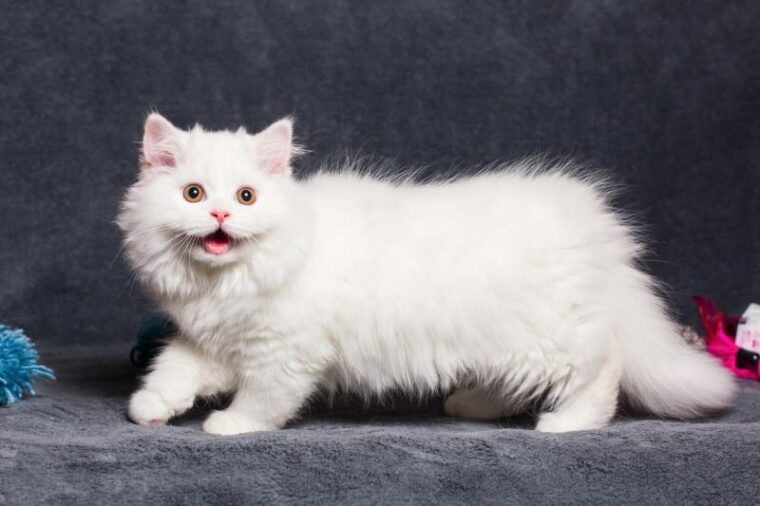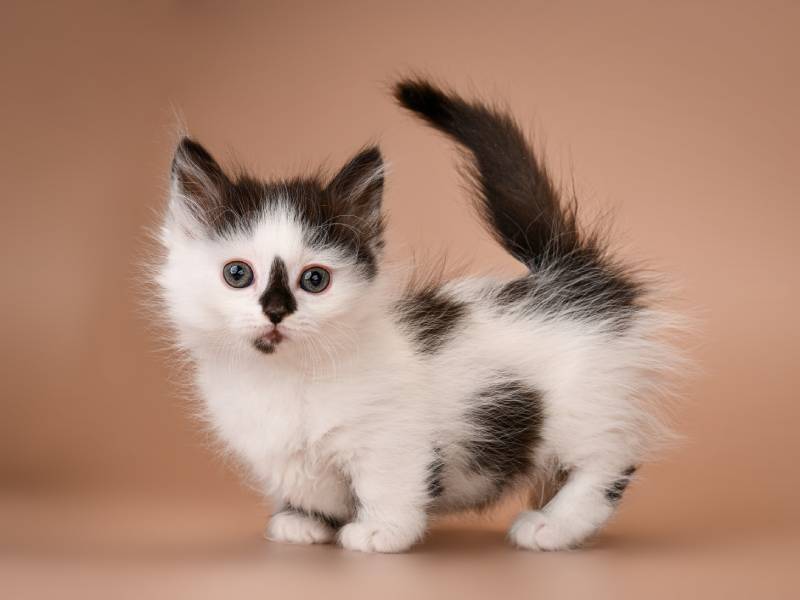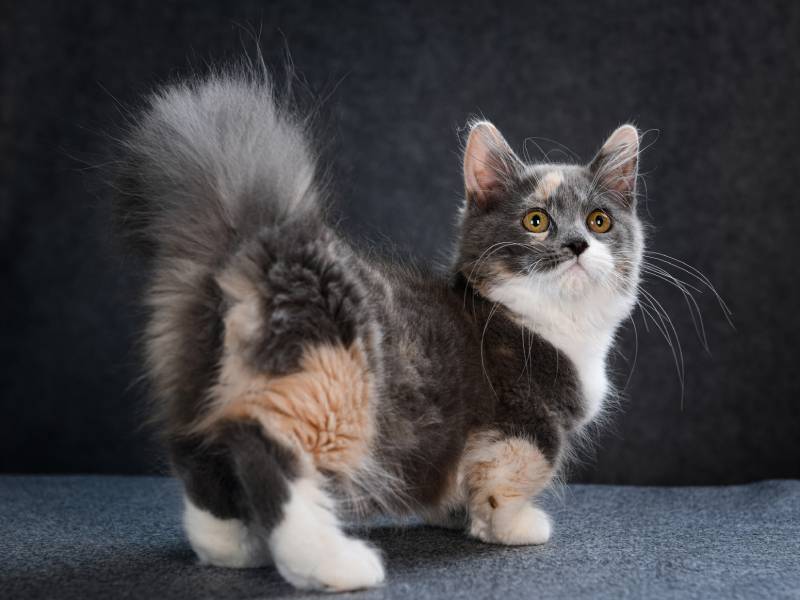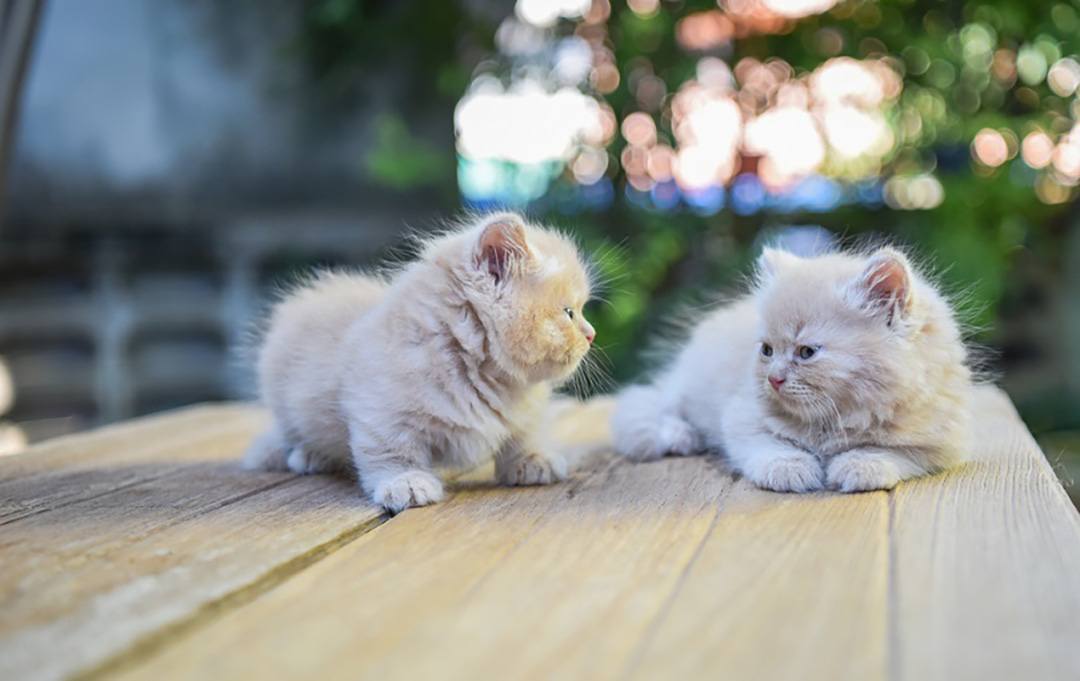
Click to Skip Ahead
Big eyes, kittenish faces, teeny-tiny legs—there’s almost nothing that could be cuter than your standard Munchkin. But if you really want to maximize cuteness, getting a Long-haired Munchkin would be the way. These cute puffballs have fluffy coats that almost brush the floor and big, soft ruffs of hair around their faces. It’s no surprise that this breed is exploding in popularity, although owners should know that this type of cat will have high grooming needs and is prone to some serious health problems.
Breed Overview
Height:
6–9 inches
Weight:
5–11 pounds
Lifespan:
12–15 years
Colors:
Any color or pattern
Suitable for:
Families with children, multi-pet homes, apartments
Temperament:
Active, friendly, playful
Munchkins have a ton of energy, and their antics are sure to bring a smile to your face! They make great playmates for older kids, and their small size means that they can adapt pretty well to living in an apartment.
Long-Haired Munchkin Characteristics
Earliest Records of Long-Haired Munchkin Cats in History
Some cat breeds—like Persians and Siamese—go back hundreds of years. But not Munchkins! There were a few reports of short-haired cats in the mid-1900s, but today’s Munchkins are even newer than that. Munchkins in the USA today are descended from a stray cat rescued in the 1980s. A woman named Sandra Hochenedel found two pregnant strays near her home in Louisiana and one of them gave birth to a few short legged kittens. And before long, a breeding program was established.

How Long-Haired Munchkin Cats Gained Popularity
When a Munchkin cat was featured on a television show sponsored by the TICA in 1991, loads of people became fascinated with the short-legged feline. While it is not clear when Long-haired Munchkins became popular, breeders probably wanted to have various types of Munchkins.
One main reason why Munchkin cats are not as popular as their standard-sized relatives, there are issues surrounding breeding them. Munchkin cats have cute, stubby legs, but the Munchkin gene can have some unintended side effects. These cats are prone to spine, back, and joint issues. They’re also at a higher risk of injury due to falls and are more vulnerable to attacks by other animals. If you do decide that a Munchkin is worth it, you’ll want to keep an eye on their health over time and schedule regular vet visits to catch any issues early.
Formal Recognition of Long-Haired Munchkin Cats
Long-haired Munchkins are famous for their tiny size, their stumpy legs, and their kittenish faces. They’re generally considered to be a variant of the standard Munchkin, not its own separate breed. The only major cat association to recognize Munchkins as a breed, TICA, doesn’t distinguish between short and Long-haired Munchkins. They were recognized in 2003.
However, other major cat registries like the CFA and the GCCF don’t have Munchkins listed. That’s in part because of worries about the breed’s health and breeding making it controversial.

3 Little-Known Facts About the Long-Haired Munchkin
1. The Mother of the Munchkins Was Named Blackberry
Blackberry was the stray that gave birth to a few short-legged kittens back in the 1980s. While not short-legged herself, she is considered the Mother of the Munchkins and her legacy lives on.
2. The Name Has an Oz-some Origin
If you loved watching Dorothy in The Wizard of Oz growing up, the name Munchkin might sound familiar! In The Wizard of Oz, Munchkinland is the first place Dorothy visits—a town full of cheerful, friendly, and very short people. It’s not surprising that the first Munchkin breeders thought the name fit!

3. Most Registries Don’t Recognize It
Munchkins (long-haired and short-haired) were given official breed recognition by TICA (The International Cat Association) in 2003. However, other major cat registries like the CFA and the GCCF don’t have Munchkins listed. That’s in part because of worries about the breed’s health and breeding making it controversial.
Does a Long-Haired Munchkin Cat Make a Good Pet?
Munchkin cats make good family pets in many ways, but they aren’t the best around very small children. Because Long-haired Munchkin cats are smaller and have such short legs, it can be harder for them to get away from a child that is overbearing. They also can be easily injured by accident, especially if they already have health problems. Because of that, it’s important to supervise young children around any cat, especially Long-haired Munchkins.
On the other hand, Munchkins often are great pets for children who are a few years older. They love to play games and run around the house, and they’re sure to make older kids laugh and smile constantly. Although Munchkins may need space occasionally, they generally make great playmates.
Long-haired Munchkins tend to get along well with other pets as well! They are confident and fearless around other dogs and cats, and when they are properly introduced, they can get along well with cats and dogs of all sizes. However, it’s important to make sure that any other pets, especially dogs, are well-trained to avoid playing rough with their long-haired Munchkin friend. When it comes to birds, rodents, and other small pets, Munchkins still have full-sized prey instincts, so it’s best to keep them separated.


Conclusion
If you want a cat that’s tiny, fluffy, and surprisingly active, the Long-haired Munchkin might be the choice for you. This cute kitty is unsurprisingly popular and makes a great pet. Just make sure that you’re ready to deal with the grooming and health considerations that come with having a cat of this breed. If you’re ready to take on those challenges, a Long-haired Munchkin kitty might be your new best friend!
See Also:
- Siamese Munchkin: Pictures, Care Guide, Temperament & Traits
- Munchkin Tabby Cat: History, Pictures, Facts & More
Featured Image Credit: Sviatoslav_Shevchenko, Shutterstock






